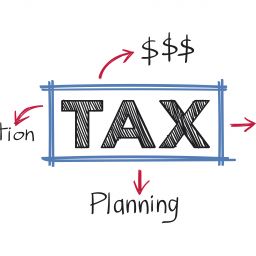Tax Credit Guide for the 2025 Tax Season: Everything You Need to Know
Each new tax season brings with it the possibility of significant savings if we are aware of and apply the tax credits for which we are eligible. For the 2025 tax return, the IRS has announced that the filing period will begin on January 27, the date from which electronic returns will be accepted.
But what exactly are tax credits, how do they differ from deductions, and why are they so important to the U.S. Latino community? In this article, we provide you with the key information based on the official guidelines of the IRS, Consumer Finance and fundamental concepts of Investopedia.
What is a Tax Credit and why is it different from a Deduction?
The tax credits are particularly valuable because they have a more direct and powerful impact on your final tax bill.
Refundable Tax Credits
Refundable tax credits are the most beneficial because they are paid in full. This means that the taxpayer (regardless of income or tax liability) is entitled to the full amount of the credit, even if the amount of tax due is reduced to zero. For example, if the refundable tax credit reduces the tax liability to less than $0, the taxpayer would receive a refund for that specific amount.
A prime example is the Earned Income Tax Credit (EITC)The tax credit is intended for taxpayers with low or moderate incomes, whether they work with an employer or are self-employed. To qualify, certain criteria must be met based on income and family size.
Another repayable loan is the Premium Tax Creditwhich helps individuals and families cover the cost of health insurance premiums purchased through the insurance marketplace.
Partially refundable tax credits
There are also tax credits that are only partially refundable. For example, the American Opportunity Credit (AOTC)The credit is intended for post-secondary education students. If a taxpayer reduces his tax liability to $0 before using the entire $2,500 portion of the credit, the remainder may be taken as a refundable credit up to the lesser of 40% of outstanding receivable o $1,000.
The Child Tax Credit used to be a non-refundable credit, but it became partially refundable (up to $1,700 in 2024 and 2025) following the enactment of the Tax Cuts and Jobs Act (TCJA). Previously, if a taxpayer had a sufficiently large tax liability, the total amount of the credit was $2,000.
During fiscal years 2020 and 2021, and as part of the U.S. Rescue PlanIn addition, this credit was temporarily increased and became fully refundable.
Main Tax Credits for the 2025 Tax Season
For FY2024 , specific examples of nonrefundable tax credits include:
Adoption credit
Credit for lifelong learning
Residential energy credit
Credit for work opportunity
Child and dependent care credit
Credit for other dependents
Credit for retirement savings contributions
Child tax credit (CTC)
Mortgage interest credit (helps lower income taxpayers to buy a home)
Earned Income Tax Credit (EITC)
Who qualifies? Persons with low or moderate income, whether or not they have dependent children.
Relevance to the Latino community: The EITC can mean a substantial rebate for eligible workers.
Tip: Be sure to check the income limits set by the IRS and keep your W-2 and 1099 forms in order.
Child Tax Credit (CTC)
What does it consist of? Provides a credit for each qualifying child you have, provided he or she meets age requirements and other criteria established by the IRS.
Changes in 2025: Check if the maximum CTC amount has changed or if additional benefits for low-income families have been implemented.
Tip: Keep the documents that prove the relationship with your dependent (birth or adoption certificates, for example).
Child and Dependent Care Credit
What does it apply to? For child care expenses for children under age 13 or dependents who are unable to care for themselves, while you are working or seeking employment.
Importance: It is crucial for families who pay for daycare or caregivers, allowing them to deduct part of those costs from their tax bill.
Education Credits (American Opportunity Tax Credit and Lifetime Learning Credit)
Who benefits? College students or parents who pay for their children's college education, in higher education programs or specialization courses.
Advantage: It reduces tuition and material costs, which encourages the Latino community to continue training and growing professionally.
Clean Energy or Energy Efficiency Credits
Why do they matter? If you have made improvements to your home to make it more energy efficient (e.g., solar panels or energy efficient appliances), you may qualify for a credit.
Considerations: Amounts and eligibility may vary by tax year and region, so find out before you file.
How Do I Start Preparing?
Recent Adjustments or Changes for 2025
According to the official IRS press release, improvements are being implemented to make tax filing easier, as well as new online tools. Although the rules for core tax credits (such as EITC and CTC) generally remain stable, it is always a good idea to check that there are no changes to the maximum amounts or income limits.
Conclusions
The Taxes 2025 season may represent a significant savings opportunity for many Latino families in the United States, as long as they are aware of and apply the tax credits that apply to them.
From the EITC to education credits, each benefit is designed to ease tax burdens and promote financial stability.
The best advice is inform you with official sources such as Consumer Finance and IRSKeep your documentation organized and, if you have any doubts, turn to a professional. This way, you will be sure to get the most out of your credits and avoid omissions that can be costly.
Source:
Consumer Finance – https://www.consumerfinance.gov/consumer-tools/guia-para-declarar-sus-impuestos
IRS – https://www.irs.gov/es/newsroom/irs-announces-jan-27-start-to-2025-tax-filing-season-agency-continues-historic-improvements-to-expand-enhance-tools-and-filing-options-to-help-taxpayers
Investopedia – https://www.investopedia.com/terms/t/taxcredit.asp
💰 Are you ready to maximize your refund this season? Don't let the stress of filing your taxes slow you down. Visit our blog for more tips and make sure you get every dollar you're entitled to.
At USA FILE SolutionsWe are committed to helping you through every step of the financial process. Our team of accounting experts is aware of all updates and changes in regulations and is prepared to assist you in the preparation and filing of your taxes in an accurate and timely manner.
Need help? we are here for you!
If you have questions about the changes in tax filing procedures or if you need assistance in preparing and filing your return, please do not hesitate to contact us.
At USA FILE SolutionsWe understand how important each individual case is and are committed to providing you with the best possible service at all times.























